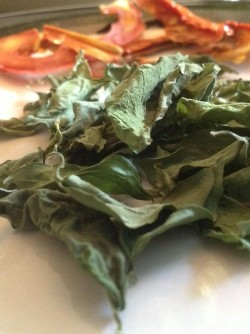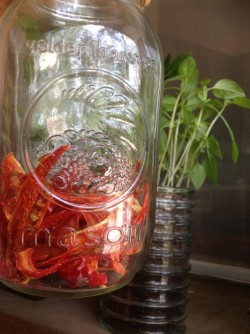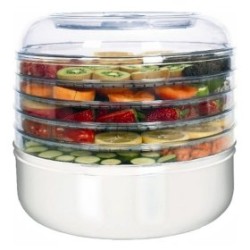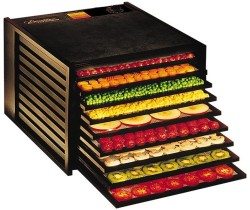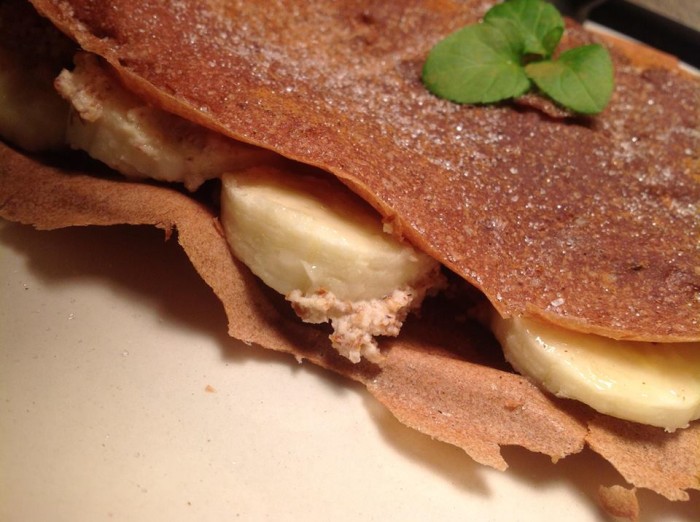Hype over the raw vegan movement is rapidly expanding with the help of social media. Items like food dehydrators are raw vegan staples, and seemingly every delicious gourmet raw meal requires this intriguing machine. Raw foodists claim precious enzymes, the very essence of cell function, are destroyed at temperatures above 118 degrees F (48 degrees C). Just as bacterium can be killed through heat, enzymes are decimated at high temperatures—decreasing the wonderful benefits of our beloved plant foods! Cooked food is not only less nutritious, but harsher on the body’s digestive system and teeth. Expanding the nutritional quality of your diet whilst simultaneously satisfying pesky cravings for less healthy food, a dehydrator is well worth its weight in radiant gold.
The low heat of the dehydrator over an extended period of time allows us to technologically mimic the sun drying technique used by humans since ancient times. Food is “cooked” by reducing water content, thus efficiently halting molds, yeasts, and bacteria from growing. This is a fantastic money-saver when buying in bulk and a great alternative to freezing food. Instead of leaving food outside in the sun, a food dehydrator relies on a series of stacked slated trays enclosed with a lid connected to a heated fan, allowing even airflow over an extended period of time. I was lucky to find an old, simple version for $7.00 at a thrift store…exactly the model I remember my mother using to make my siblings and I snacks in elementary school. Mine has only a simple on/off switch but high-end versions come equipped with temperature control, timers, and special racks to ensure even drying of the food. The price of a new dehydrator can run from about $30 to upwards of $200. Besides the initial cost, the user can save quite a bit of money because buying pre-dried food adds the expense of packaging, adding preservatives, and shipment. Instead of buying items loaded with ingredients incomprehensible to most human beings, the same food can be made at home with minimal effort and solely involve the price of the whole food ingredients, and not the cost of your well-being.
Making dehydrated snacks at home can drastically reduce the amount of sodium, fat, and trans fat in your diet, as well as depleting chemical preservatives the human body doesn’t need. Dehydrated kale, sweet potato, tomatoes, bell peppers, and fruit are all amazing for you and uniquely flavorful. Dried fruits in particular are incredibly healthy; they have a low Glycemic Index, promote healthy B.M.I., inhibit oral bacterium, and require no additional sweeteners because the drying process concentrates the natural sugars in fruit. There is so much versatility when “cooking” with a dehydrator: pizza, dried herbs, chips, cookies, bread, crackers, nearly anything you can make in an oven can be dehydrated with the help of a good recipe, and patience. I would say the only negative thing about owning this miracle machine is the time spent waiting for food to be done, taking anywhere from 3 to 24 hours depending on the water content of the fruit or vegetable involved. Running the dehydrator overnight has much ameliorated this issue, and it does feel nice to have that little injection of pride when it comes out delicious and perfect after being so (im)patient.
Here are some recommended models:
And now– onto some delicious Raw recipes using a dehydrator! Click here for my Raw Banana Chocolate Crepe!
____
Photo: Jessica Ferguson

